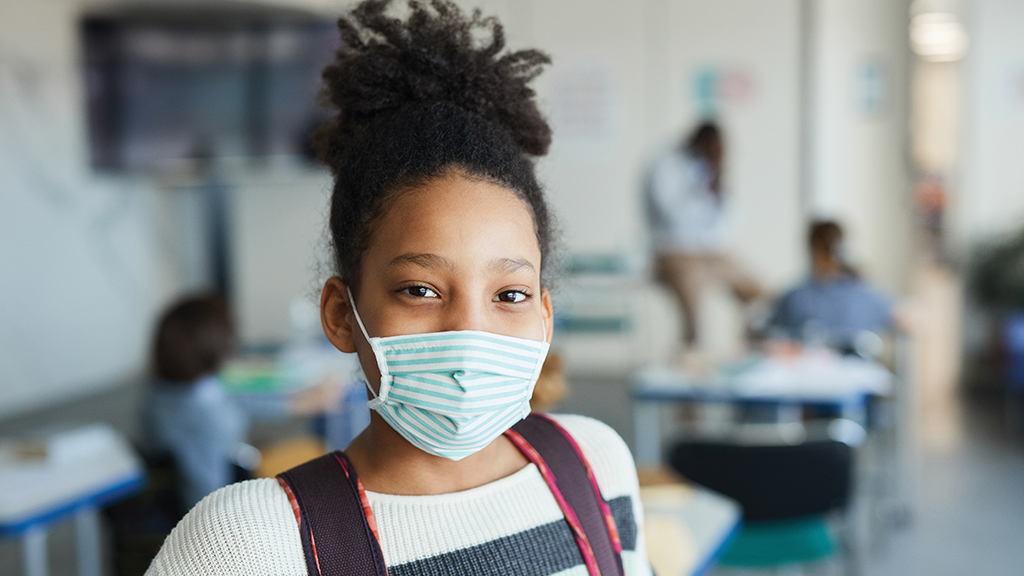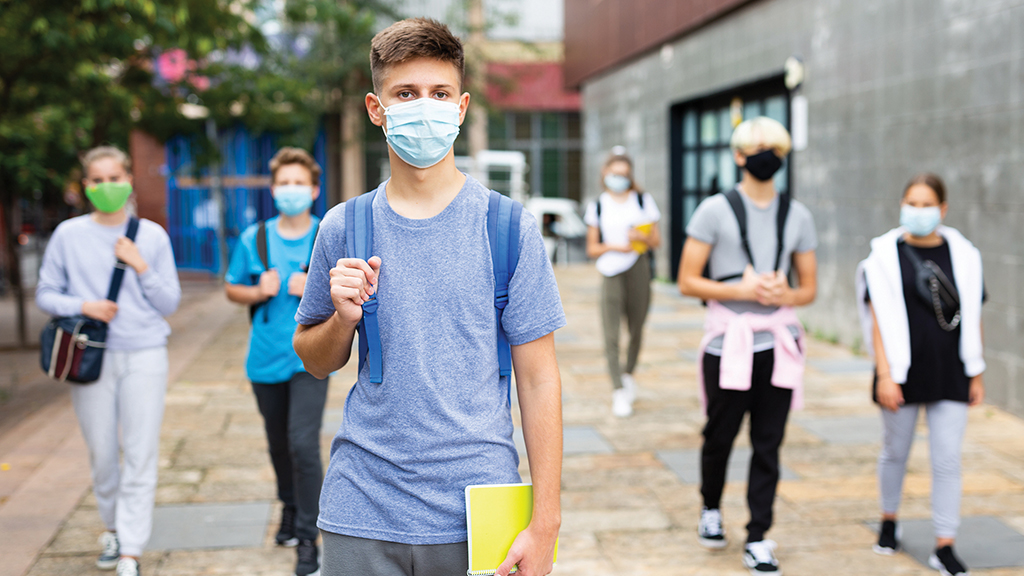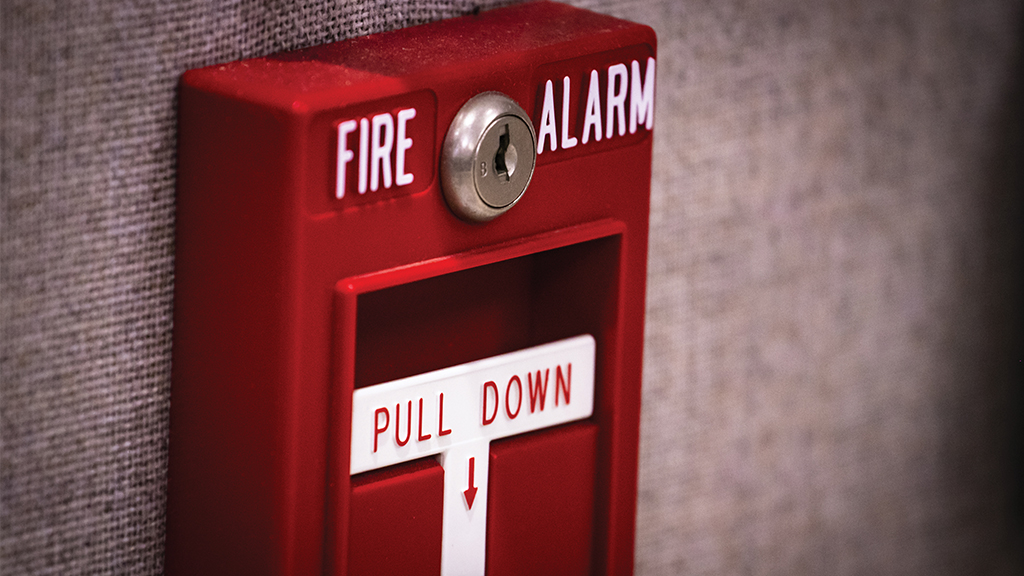
Photo credit: SEVENTYFOUR/STOCK.ADOBE.COM
As schools across the country reopen, many school leaders have discovered that previous safety measures will not work as they did before the pandemic. Others are relying upon one or two measures to prevent the spread of COVID when it must be a multilayered approach. Still others have focused everything on COVID and left their normal safety plans gathering dust on the shelf.
As news headlines overtake our days and nights, and angry shouts flood our minds, phone calls, emails, and board meetings, we can get too focused on the upheaval at our doors and lose sight of the students and staff inside our walls.
We must take a multitiered approach to preventing the spread of COVID. Relying on masks only is foolish since no single measure can fully protect our students and staff. Many of the precautions we can take for COVID also can help prevent the spread of other illnesses. By preventing the spread of other illnesses, we can keep students in the classroom vs. at home through quarantine or virtual instruction.
Upgrading filters to a higher grade can help reduce the spread of a whole host of germs and airborne illnesses. Once COVID becomes a yearly occurrence like the flu, having upgraded air systems in place will keep the “normal” illnesses at bay and reduce the absences that we are all used to in the winter months. Missouri’s Nixa Public Schools has seen a reduction in illnesses of students and staff after the introduction of upgraded air filters and UV-C lights in air ducts.
If upgrading air filters is not an option, new portable air purification systems are a great alternative or addition to your mitigation plan. Many of these systems can increase a room’s MERV filtration rating to that of a hospital or surgical room. With the various COVID funding options, these can be an easy addition to your buildings while also helping decrease illness, mold, dust, and other airborne particles.
Cleaning procedures are important, too. Nixa has implemented the use of foggers to protect against COVID. The foggers also have stopped the spread of normal infections. Our wrestling team used the foggers on their mats, reducing skin infections of ringworm, impetigo, and even the occasional staph infection. Our band and choir programs also have used fogging machines to keep areas clean for students in large groups. We also have been using these systems on our buses daily to help in the cleaning of those commonly touched surfaces.
Cohorts and technology
When looking at quarantine guidelines as well as at how COVID (and other illnesses) spread, cohorting can help. Cohorting is the practice of keeping a smaller group of students and adults together throughout the day. It helps with contact tracing as well as with limiting exposure to illness.
We have to keep students’ lives as normal as possible. Cohorting, which is recommended in many different COVID guidelines, has allowed our students to get regular peer interaction with reduced exposure. Students stay in their cohort in all areas of the school day when possible, including when they go from their homeroom to music, PE, or the library.
Schools can look outside the education world to discover new technology. Early in the pandemic, Nixa reached out to hospitals and asked them how they were able to flip their rooms quickly after a COVID patient had used them. Their solution was UV-C lights, which could sanitize a room in 15 to 30 minutes. Nixa was able to use funds from grants and other sources, including a donation from our custodial company, to fund machines for all our buildings.
When anyone was or is suspected of having COVID, these light machines run in the classrooms and areas to reduce any surface transmission. This has also reduced the spread of other common illnesses transmissible through surface spread. We plan to continue the use of these machines during flu season or when other illnesses are having an impact on the school population.
The weight
The weight of COVID, as well as all the other issues going on in our school world, means schools need to go beyond normal physical safety and look after the mental health of our students and staff.
Students are acting out more on social media through vandalism challenges. Staff are experiencing more sick days. These are manifestations of something deeper going on. As students see adults resorting to violence to express their feelings, kids are going to view violent acts as an acceptable way to express their emotions.
Now is also a great time to put in place behavioral risk assessment teams. Having a dedicated team to deal with any concerns following a specific process will help take human error out of the situation. Following a team assessment approach can help guide schools to the best outcome and remove as much bias as possible.

Photo credit: JACKF/STOCK.ADOBE.COM
Prior to the pandemic, Nixa partnered with a behavioral health provider to bring mental health professionals into schools. Last year, we weren’t just dealing with mental health issues from COVID. We also had two student suicides and the arrest of a school assistant principal. Having those health professionals on-site allowed us to access their services when students and staff needed them. In addition, students have been able to access services before, after, or during the school day, instead of only on the weekends and evenings.
Schools also need to review their digital education policies. Students and staff are online more than ever, which presents several issues. Students are exposed to numerous threats online, from bullying to predators. Schools should include programs for nontraditional guardians, like grandparents or aunts and uncles, who might not be as aware of everything students can experience online. Talking to grandparents about pornography and sex trafficking might not be comfortable, but it is necessary for us to protect our students.
We know we cannot stop the exposure to these bad things completely, but we can work to educate people to know what to do when it happens. We can’t remove the threat of severe weather or earthquakes, but we have plans and training in place to make sure people are aware of the threat and know what to do when that threat does come. The same ideal must be in place for online and other threats to our students.
Weather and urgent care
Natural disasters have not stopped during the pandemic. We are still living in a world with severe weather. Schools must make sure they are still practicing their safety plans. For those that didn’t have in-person classes last school year, discussions on how to handle safety drills and actual events are necessary.
A normal fire drill or tornado drill might look different since schools have to contact trace students now. Our schools are not doing schoolwide drills unless needed, so they have smaller groups walking through the drill. This allows each class to show what they need to do and where to go without having hundreds of students all together.

Photo credit: BENJAMIN CLAPP/STOCK.ADOBE.COM
One unexpected benefit is that the smaller groups have allowed classes to have more discussion and students to ask questions about various drills when that might not have happened in the past. This has been especially true for active shooter and intruder drills. These smaller-class scenarios have generated a lot of discussion and a new set of eyes on situations, which have led to us adjusting our plans.
Adjusting as new information is presented is one of the major things that led us to having on-site clinics for our students and staff. Prior to the pandemic, we found that access to urgent-care style visits was one of the major reasons students and staff were missing. Those needing medical care would need to miss school for several hours, either from waiting in the urgent care line for hours or only getting an appointment in the middle of the school day. In our first year of implementation in 2018-19, the district saved enough on substitute costs to cover the cost of the program for our staff and their children.
Now that we are in a pandemic, we have found that keeping our students and staff out of urgent care situations where they are exposed to various illnesses can help reduce exposure and reduce their time missed out of class to minutes and not hours. This also helps in safety planning because the more frequently staff are on-site, the better your plan will work. Substitutes can be a major hole in any district safety plan.
Our school’s safety plans must evolve this year to make sure they have a flexible framework. We have learned many things over the past two school years to solidify our planning and help us keep schools as the safest place for students to be. Taking this year to review and revise will serve us for years to come.
Zac Rantz (zacrantz@nixaschools.net) is the chief communication officer and safety coordinator of Nixa Public Schools, Missouri.
Share this content